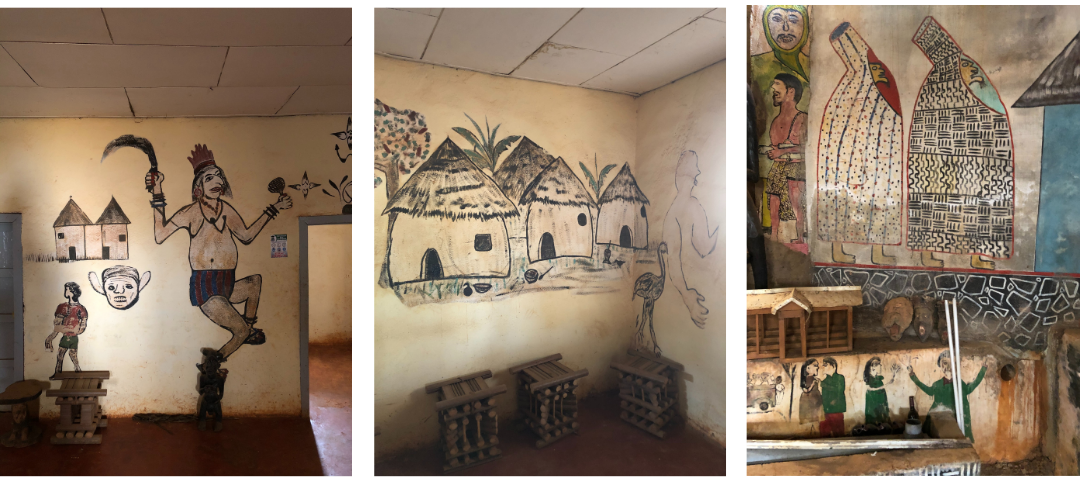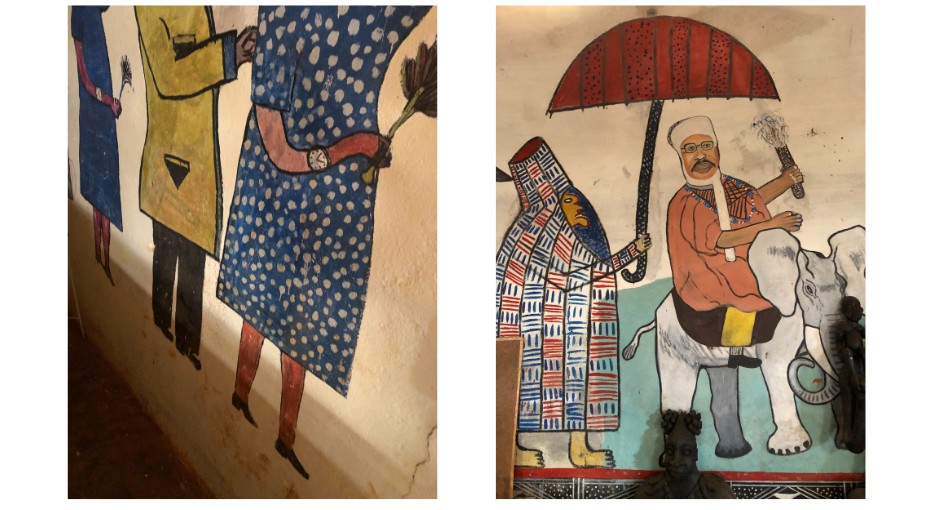In June 2018, the Espace Culturel Gacha welcomed a delegation of African kings from West Africa to Paris. During, several days, the chiefs had the opportunity to share and exchange on the valorization, the protection of the African heritage and the development of tourism of the territories.

Visit of a delegation of traditional authorities to the Quai Branly Museum in Paris, 2018.
In the continuity of this intercultural exchange, our cultural programme officer, Danilo Lovisi, was welcomed by the king of the Bangoulap. Discover his testimony in our podcast « Mural paintings of the Bangoulap kingdom: from orality to visuality » which retraces the history and the need for protection of these paintings.
Evolving techniques
Between the first mural frescoes and those of today, there are changes in techniques. Initially, a limited palette of organic and earthy colours was used: red, black, ochre and yellow. These pigments were made from mineral oxides, mud, shells, lime, manure or even natural leather, animal bones and sometimes bird prints.
Nowadays, industrial paints are used which can not only remove a traditional look, but also multiply the chromatic possibilities with green, blue and violet.

Left and centre: murals representing the daily life of the chieftaincy. Right: representation of the notables wearing traditional clothes.
Persistent themes
The most recurrent themes are the key moments of life: birth, initiations, marriages, changes in status and death. The walls and facades of religious buildings are also decorated. The historical events of each locality are also depicted, highlighting the values of courage, wisdom and strength of kings, queens and notables.

Left: detail of the paintings. Right: representation of the King’s exit accompanied by a notable.
These paintings and symbols engraved on the walls transform individual memories into collective memories, anecdote into history and orality into visuality.